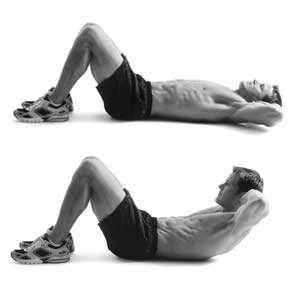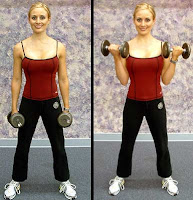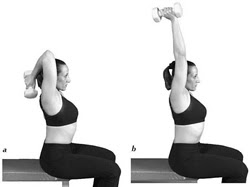WEIGHT MANAGEMENT PROGRAMMEKLINIK LINA

Lina Then Lina Now


Mahathir Then Mahathir Now
This write-up is specially designed for my patients who are undergoing weight management in my clinic. Please read through the content for further understanding of what weight management is all about. Good Luck!
What many people are concerned about including yourself is how to be slim and have a body like a model. Is that achievable?? That is the question you have to ask yourself because weight management is nothing but self discipline. To begin the weight management programme, firstly you have to ask yourself, what is the aim or objective. What do you want as an outcome of this programme? Now, the best outcome is for sure a slim body with good muscle tone, not a flabby skin, and of course, long lasting. Most weight management programme will bring your weight down to ideal but will you be able to maintain the healthy weight forever?? That is why in our weight management programme, we stress on lifestyle modification which includes dietary changes, regular exercise routine and regular sleep patterns. Healthy lifestyle equals healthy body.
Dietary ChangesThe main aim is to change what, how and when you eat. What to eat while on diet?" A common question asked by many of my patients. One thing you have to instill is that you are not on DIET. You are going to change what you eat forever. What we eat is what we are; so let's look at what we can eat first. The key to a healthy diet is low in simple carbohydrate (i.e no refined sugar), high protein, high complex carbohydrate and high fibre diet. Always calculate your calories when you eat. Always look at labels and ingredients of any products that you buy in store. Ensure the serving size before you eat so that you don't overeat. If sugar is the top three ingredients listed in the label, then the product is loaded with sugar; avoid this product. Be a smart consumer. Don't let the product rule you, you are the chef of your menu, so you decide what ingredients are in your food.
Drink a glass of purified water before you eat to avoid overeating.
RiceWho is Malaysian without rice?? Rice contains carbohydrate in which too much of it is not good for a healthy weight. Aim to eat half portion of rice which is half a bowl, maximum twice a day. Switch to brown rice, or basmati rice. If you are not used to eating brown rice, try to mix 1/4 brown rice to 3/4 basmati rice for a week. Then slowly increase the amount of brown rice ratio to basmati rice. Aim for 100% brown unpolished rice.
Resist adding rice to your meal. Take more vegetable or meat to replace the rice. Avoid fried rice whenever possible.
MeeMee also contains carbohydrate. Aim to eat half a bowl of mee only with more vegetable or protein in the form of lean chicken or lean beef. Mee soup is preferable than mee curry. If you are eating mee curry, resist from taking a lot of the soup (2-5 spoons is enough). Avoid fried mee whenever possible. If you are cooking or eating spaghetti, opt for wholegrain range.
BreadBread is mainly carbohydrate. Avoid white bread. The best bread is a low glycemic index bread or multigrain/wholegrain bread (Gardenia Breakthrough or High 5 is easily available in most stores); not wholemeal bread. The heavier the bread the better it is. How many bread to eat? For breakfast, lunch or dinner, 2 multigrain bread is enough either in sandwich form with chicken slices, tuna with light mayonnaise (avoid mayonnaise whenever possible) or eggs (2 eggs with 1 yolk only) or with peanut butter, or thin layer of butter and jam. Choose jam that is 100% fruit base (eg. St Dalfour brand) or diabetic jam.
Butter or margerine?? Margerine is hydrogenated fat. Butter is a better choice.
Avoid buying bread from bakery as most ingredients are not labelled. Most bread in bakeries have sugar and marjerine added. Avoid danish, croissant, fruit/egg tart, biscuits and puffs as it is loaded with sugar and calories.
VegetableVegetable is good. I would encourage everyone to eat more of vegetable. The more the merrier. Although it has some calories in it, but we Malaysians tend to eat less of it. So, by all means, eat more of vegetable, no limit but watch how you cook it. Raw as in salads with dressing at the side (choose vinaigrette not italian sauce or coleslaw). Eat raw salad (all types), spinach, tomatoes, broccoli, cauliflower, carrot, green pepper and cucumber. Other good vegetable to eat raw are daum selom, pucuk raja, daun jambu or quick boil of pucuk paku, pucuk ubi, pucuk betik. You may eat your vegetables with sambal belacan (chilli, belacan, salt, lime; no sugar). Vegetable cooked in soup form is also good but do not overcook. Let the soup boil first then put the vegetable last for 1 minute before you turn off the fire. Try not to fry the vegetable. If need to fry just spray the oil, and use olive oil.
FruitFruits are good for you. Aim to eat at least a slice of fruit after each meal. If you are hungry in betweel meals, snack on fruits. Fruits contains vitamins and fibre. If you are a diabetics, do not eat too much of citrus fruits.
SnacksIn between meals, if you feel hungry, you can have snacks. The good snacks are nuts e.g. peanut, almond, cashew, pistachio; raisins or dried fruit e.g. prune or you can snack on biscuits e.g. wholegrain, low-salt, high fibre biscuits.
WaterDrink plenty of purified plain water. Aim 10-12 glasses of water a day. Avoid caffeinated beverages and carbonated drinks. You may drink tea or coffee a cup a day, but remember to replace each cup with 2 glasses of water. This is due to the diuretic effect of tea and coffee which means it promotes water loss from kidneys. Tea or coffee has antioxidant which is good for health. However, avoid drinking tea or coffee after 4pm or you might find it difficult to sleep at night. Green tea is preferable to the others. Avoid drinking cordials as it is loaded with sugar. Buy yourself a juicer and make fresh juices everyday, do not add any sugar, and drink a glass a day. You can make all kinds of juices such as apple, strawberry, mango, pineapple, honeydew, watermelon and keep it refrigerated.
EggThere are different types of eggs in the market. Low cholesterol, omega 3 and the list goes on. Which one is the best?? Personally, I would buy a low cholesterol, omega 3 eggs with a reasonable price. The egg yolk is where the cholesterol is whereas the egg white is high in protein. Aim to eat a maximum of 3 eggs a week only.
FibreFibre = anti-fat. Soluble fibre includes dried beans, oats, barley, apples, citrus fruits, and potatoes and insoluble fibre. Recommended intake of 25-30 grams of daily fiber a day.
What about the regular malaysian food??I am sure you are wondering about what other food is healthy. What about roti canai?? If given a choice between roti canai and tosai, I would go for tosai. It is less oily compared to roti canai. If you must have roti canai, do not exceed one roti canai a week. Chapatti is also a good choice but watch the curry used as the dip.
What about curry puff, pisang goreng and other kuih? Mostly contain high sugar, high cholesterol especially if it is made of coconut milk (santan) or if it is fried e.g. curry puff or banana fritters. Avoid it whenever possible. Do not make it a routine tea time meal. If you must have have it, do not exceed two kuih at one time.
Nasi lemak....is the all time favourite. It is normally cooked with coconut milk. Practise half portion nasi lemak with extra cucumber or anchovies (ikan bilis) and only eat it once a week. If you are preparing the nasi lemak yourself, replace the coconut milk with low fat milk.
Nasi briyani or nasi tomato are loaded with carbohydrate and fat. It is not recommended as a regular meal, only on special occasions.
Chicken rice. Ensure that chicken rice is not cooked with chicken fat. Steam or roasted chicken is better than fried chicken. If you are cooking the chicken rice yourself, cook the rice with some chicken meat or bones instead of using the broth from chicken fat. Add more cucumber, tomatoes and salads in your chicken rice.
Yong tau foo is a good choice of food. However, make sure that you do not fry it. Have it boiled and prepared with soup. Do not pour the sauce on it, have the sauce on the side for you to dip only when necessary. This way, you don't overdo with the sauce. The sauce also contains a lot of sugar. Choose the vegetable yong tau foo as opposed to the others e.g. lady's finger, taufoo, kangkong, brinjal...
Fried rice, fried mee, fried meehoon are not recommended.
What to avoid?Fried foodsWhy do we need to avoid fried foods? All fried foods contain trans fat, formed when vegetable oils are hardened in the cooking process. Trans fat increases blood levels of bad cholesterol (LDL) and reduces the good cholesterol (HDL). Fried foods using vegetable oils that can become rancid and produce free radicals which can damage cells and probably increase risk of obesity.
ChocolatesThe regular chocolates are loaded with sugar. The good chocolate that has antioxidant is dark chocolate with no sugar added.
ChipsIts best to avoid chips as it contains monosodium glutamate (msg), high salt content, food colouring and mostly fat.
SugarAvoid all kinds of sugar if possible. If you must have it, go for those sugar made for diabetics.
Preserved or cured meatsAvoid food such as sausages, bacon, preserved fish (ikan masin) and preserved fruits (jeruk) as it contains nitrosoamines, a powerful carcinogen for stomach cancer.
What about supplement?Supplement such as vitamins, antioxidants, probiotics are highly recommended.
Vitamin A - antioxidant, boost immune system (Therapeutic daily dose:7000 to 10000 IU)
Vitamin C - antioxidant, raises good cholesterol (HDL), prevents oxidation of bad cholesterol (LDL) (Therapeutic daily dose: 1000-2000mg)
Vitamin E - antioxidant, lower risk of heart attack and stroke. Only natural vitamin E supplements (mixed natural tocopherols) are potent. (Therapeutic daily dose: 400-1200 IU)
Selenium - antioxidant, increase effectiveness of vitamin E. Prevent heart disease by increasing the good cholesterol, decreasing the bad cholesterol and decreasing the stickiness of the blood. Also protects against certain types of cancer. (Therapeutic daily dose:100-200mcg)
Omega 3 fish oil - lowers cholesterol and prevent blood clot
Multivitamin + multimineral
Folic acid - for childbearing age women
Coenzyme Q 10 - especially if you are on cholesterol lowering medications
Calcium plus Vitamin D
ExerciseThere is no short cuts to weight management. You need to exercise to burn the extra calories. Aim for 2 to 3 times a week of about 20-30 minutes of cardio exercise. However, you can actually burn the extra calories by doing some easy lifestyle changes. If you walk to the bus stop to work, try to do it half the time you usually take. For good abdominal muscle tone, do the stomach crunch when you are lying in bed or watching tv. If you like to go to shopping malls, try to walk faster and fix some weight at your feet.
Sometimes you might wonder why your weight reduction is slow.....
Initially, when you start a weight management programme, the weight loss is rapid. This is due to water loss from your body. After a while, the weight loss slows down until you reach the ideal weight. However, do not despair. This is quite normal. Weight loss should be gradual, or you will end up with flabby muscles and skin.
How to start losing weight?Before starting a weight management programme, it is best to prepare yourself. Be prepared that this is going to be permanent lifestyle changes, to lose weight and maintain an ideal weight and healthy lifestyle.
Start by preparing a 5 day menus of your current intake including weekends, as we tend to treat ourselves during weekend. Record all intakes including sweets or even a glass of coke. Review your diet preferably with your doctor. Make changes wherever you can, follow the suggestions above.
Day Breakfast Brunch Lunch Tea Dinner Supper
Friday
Saturday
Sunday
Monday
Tuesday
Remember low simple carbohydrate, high complex carbohydrates, high protein, high fibre, low sugar, low salt, low fat diet is ideal.
By listing down what we eat, then only can we see what is wrong with our diet. Start by changes the dietary intake or the way you prepare a meal.
What's next?Get a reliable weighing machine and weigh yourself in kilogram. At the same time, measure your height in cm. Start calculating your BMI (body mass index). BMI = weight (kg)/height (m) x height (m)
A BMI over 25 is defined as overweight and a BMI of over 30 as obese. The healthy weight range for BMI is 18.5-22.9
BMI
<> or = 23 Overweight
25-29.9 Obese
> or = 30 Severely obese
Classification of weight by BMI in Asian Adults
Look at the chart, how far are you from the ideal weight. That should be your aim. If you are 5kg overweight, it is easier to shed that 5kg than if you are 20kg overweight. It may take up to 6 months or more if you have to lose more but persistence is the key in weight management. Remember, the aim is permanent lifestyle changes in order to maintain a healthy weight. Aim for a slow and steady weight reduction to avoid heart complication, dehydration or fatique.
Measure your waistline and record it down.
Next, get a complete blood test done from your doctor. The blood test should include full blood count, renal profile, lipid profile, liver function test, thyroid function test, fasting glucose level and urinalysis. You are advised to fast at least 10 hours before the blood test. Why do I need a blood test? The initial blood test is useful to find out any metabolic disease that may interfere with the weight management programme. If you have diabetes, high cholesterol or hyperthyroid condition, it needs to be addresssed first. You may need medications to treat those conditions first.
Weight Management RegimeHow do we do it? In my clinic, we try to incorporate our regime into patient's lifestyle, budget and how much they need to lose. Take a look at the regimes and you may decide which is most suitable for you.
Regime AIntensive phase (for 2 weeks only):
Meal replacement for 2 meals (breakfast, lunch or dinner)
Lecithin 1200mg per day
Vitamin E 400IU per day
Carbohydrate blocker with one meal (if you take meal high in carbohydrate)
Lots of water
Multivitamin
Exercise 3 times per week
Maintenance phase:One meal replacement until ideal weight or able to control dietary intake
Lecithin
Vitamin E
Carbohydrate blocker with each meal
Lots of water
Multivitamin
Liquid carnitine
Exercise 3 times per week
Regime BEnerflex-forte 2 sachets twice daily before meal
Lecithin 1200mg
Vitamin E 400IU per day
Lots of water
Multivitamin
Liquid carnitine
Carbohydrate blocker if necessary
Exercise 3 times per week
Regime CDietary changes only (900-1200kcal per day)
Lecithin 1200mg
Vitamin E 400IU per day
Multivitamin
Liquid carnitine
Carbohydrate blocker if necessary
Exercise 3 times per week
Why Lecithin and Vitamin E?Lecithin is a fat emulsifier of fatty substances in the body, and vitamin E is a fat-soluble anti-oxidant which helps to reduce free radicals in the body.
Appetite suppressantIn some cases, whereby patients may have problem with increase appetite, they may need to be on appetite suppressant such as Duromine. Duromine is a prescription only medication, please get advise from your doctor before taking such medication. Side-effects of Duromine includes palpitation, insomnia.
Most patients are confused about their calorie intake.Your specific daily calorie requirement depends on your level of activity. The more active your lifestyle, the more energy you need. Calculate your daily calorie requirement using the formula below:
daily calorie requirement = ideal weight x energy requirement (refer below)
Energy requirementWeight status Overweight Normal weight Underweight
Sedentary 25 kcal/kg 30 kcal/kg 35 kcal/kg
Moderate activity 35 kcal/kg 40 kcal/kg
Marked activity 40 kcal/kg 45 kcal/kg
Example:
Height = 150cm, current weight = 70kg
Classification = overweight, ideal BMI weight 49.5kg
Lifestyle = sedentary
Overweight person with a sedentary lifestyle requires 25 kcal/kg. Therefore, his daily calorie requirement nesessary to obtain and maintain the ideal weight of 49.5 kg is: 49.5 x 25 = 1237.5 kcal per day
Not that the daily calorie requirement is to maintain ideal weight and not for weight loss.
Most common complaint from my patients is what should I eat? Please give me some ideas of what I can eat. Here are some guidelines for menu plan. I have included the calculated calories.
Breakfast1) 1/2 nasi lemak (195 kcal)
2) Fried mee hoon 1/2 plate (147 kcal)
3) Red bean pau (40 kcal)
4) Thosai 1 piece (147kcal)
5) Omelette 1 egg (107 kcal)
6) Bubur kacang merah 1/2 bowl (50.5 kcal)
7) 2 slices of wholegrain bread
Lunch or Dinner1) 1/2 cup plain cooked rice (83.5 cal)
1 medium piece chicken kurma (175 cal)
4 tbsp long beans with tauchoo (74 cal)
1 slice watermelon (37 cal)
*calories can be reduced if you substitute coconut milk with low fat milk, fry the vegetables with spray of olive oil only and replace plain rice with brown rice
2) 1/2 cup plain cooked rice
Fried pomfret (bawal) (143 cal)
4 tbsp bean sprout (taugeh) (108 cal)
1 slice guava (41 cal)
*steam fish is a better choice
3) 1/2 cup plain cooked rice
1 piece chicken curry (195 cal)
5 tbsp spinach with anchovies (32.5 cal)
1 slice papaya (56 cal)
*replace coconut milk with low fat milk, use olive oil for frying (1 tbsp only), boil the spinach rather than fry
4) 1/2 cup plain cooked rice
1 serving of fried anchovies with chilli (126 cal)
4 tbsp kangkung belacan (96 cal)
1 red apple (63 cal)
5) Mee soup 1 bowl (383 cal)
1 medium size banana (76 cal)
6) Fried mee (281 cal)
Prune 7 pieces (100cal)
7) Chicken rice 1 plate (278 cal)
4 tbsp rojak (182 cal)
8) Nasi briyani 1/2 plate (112 kcal)
Fried chicken (255 kcal)
Mutton curry 1/2 cup (92 kcal)
Dates 5pcs (155 kcal)
Snack1) Almonds 12 nuts (118 kcal)
2) Grapes 10 (75 kcal)
3) Red apple 1 fruit (small) (52 kcal)
4) Cream crackers 2 pieces (80 kcal)
5) Mandarin orange 1 fruit (medium) (38 kcal)
6) Dates 5 fruits (155 kcal)
7) Guava 1/2 fruit (51 kcal)
8) Papaya 1 slice (53 kcal)
9) Prune 5 fruits (78 kcal)
10) Watermelon 1 slice (31 kcal)
11) Pineapple 1 slice (36 kcal)
12) Plain low fat yoghurt 1 cup (112 kcal)
13) Cheese 1 slice (64 kcal)
I hope that this guide will inspire many people to lose weight healthily and maintain their weight permanently.
All the best.
Lina













